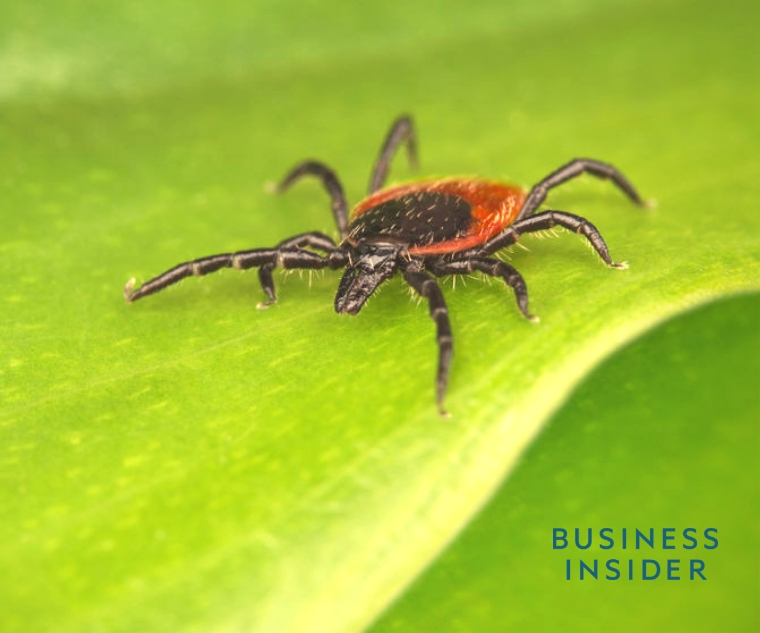
Ticks are spreading across the US and and so are the dangerous diseases they carry - video and resources
Following is a transcript of the video.
Benji Jones: In the summer of 2019, a bull was found dead on a farm in North Carolina. Dead by exsanguination. Which means it was drained of blood. The culprit wasn't real-life vampires, but something just as frightening: an army of more than 1,000 Asian longhorned ticks.
But here's the thing. As scary as that sounds, Asian longhorns are just one of about 90 tick species found in the US. All of them suck blood, all of them can carry disease, and all of them are incredibly difficult to kill. The Asian longhorned tick is truly a villainous pest.
Not only is it an invasive species, but it can also clone itself over and over again. Since it was first reported in 2017, it's crawled its way to at least 12 other states. Including where we are here, New York.
Danielle Tufts: OK, so this is an adult. This looks like the Asian longhorned tick to me.
Jones: So this the infamous Asian longhorn tick?
Tufts: Yep.
Jones: That's Danielle Tufts, a disease ecologist at Columbia University. She's studying ticks in Staten Island to figure out what diseases they carry. But first, she has to collect them.
Tufts: So, this is what we call a drag cloth, and it's a meter by meter, so a meter squared. And basically what we would do is we just walk at a nice, even, slow pace and drag this right behind us. And we'll stop every about 20 meters or so, and we'll flip the cloth over, and we'll look for whatever ticks are on the backside.
Jones: Contrary to what many people believe, ticks don't actively seek you out.
Tufts: Ah, so here's a tick right here.
Jones: Tick spotted! So many ticks in this forest.
Tufts: Oh, yeah. This is a very ticky forest.
Jones: And they're definitely not jumping on you from trees. In fact, ticks can't even jump. They're actually more like opportunists who take what they can get.
Tufts: Ticks are what we call sit-and-wait predators, where they climb up to the top of the blades of grass and they put their arms out. And at the top of their arms they have little sticky pads. And those pads will get attracted to this. And this is how they get stuck on your pants or on other animals in the wild as well.
Jones: And what do you call the, like, when they stick their hands up like this?
Tufts: We call that questing or host-seeking.
Jones: Yeah, ticks are literally on a quest for blood! And they've mastered the art of extracting it, all without getting caught. After a tick crawls onto you, it sneaks into a concealed crevice, like your armpit. And after that, it uses two horrifying hook-like structures to tear into your flesh and keep from falling off. Then, they insert what is basically a straw, covered in spikes, like a piece of barbed wire, which makes them even harder to remove. And this sounds like it would hurt, a lot.
But ticks have another trick up their sleeve, or rather their mouth. Saliva. It's a tick's ultimate weapon to avoid detection. It contains pain-numbing properties, so you don't notice them even as they stab and rip your flesh. Plus, it suppresses your immune system, so the wound is less likely to get red or itchy.
That's why ticks can stay in you undetected for days, even as they grow to several times their normal size. And if you do find a tick in time to get it off, it won't die easily. Tufts says that ticks can survive for as long as two years without a blood meal. And they're also masters of the elements. They can tolerate long periods of drought, and some species can survive underwater for two to three days. So, yeah, flushing them down the toilet or sink likely won't kill them.
Tufts: If you put them in the sink, sometimes they'll crawl back out of the sink.
Jones: Now, all of this wouldn't be such a big problem if it weren't for the diseases they carry. In the US alone, they transmit at least 16 diseases to humans. That's more than any other insect, including mosquitoes. Lyme disease alone, for example, infects an estimated 300,000 Americans each year. And it's only getting worse.
In 2004, there were about 23,000 cases of tick-borne disease reported to the CDC. But by 2017, that number had almost tripled to nearly 60,000. But what isn't clear is why. Why ticks and the diseases they carry are spreading. Though Tufts and other scientists say that climate change is at least partly to blame.
Click here to see video and entire article.
